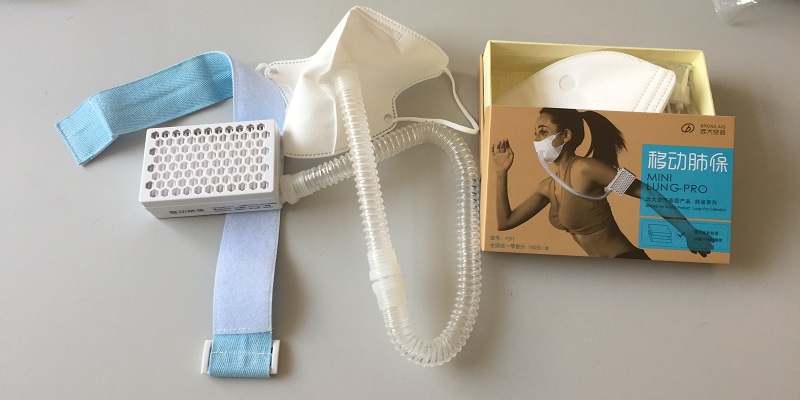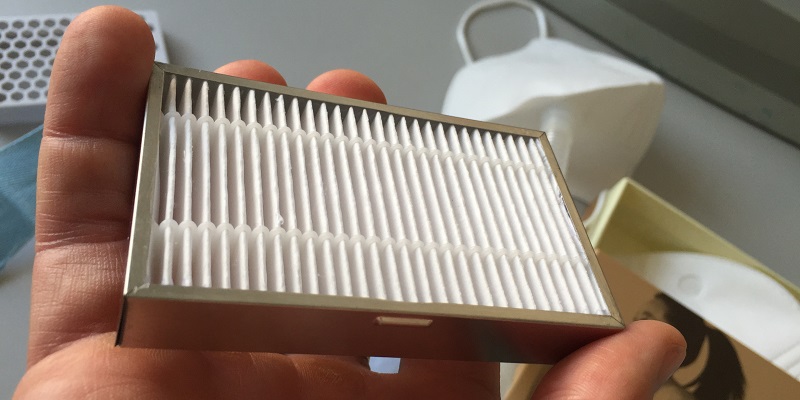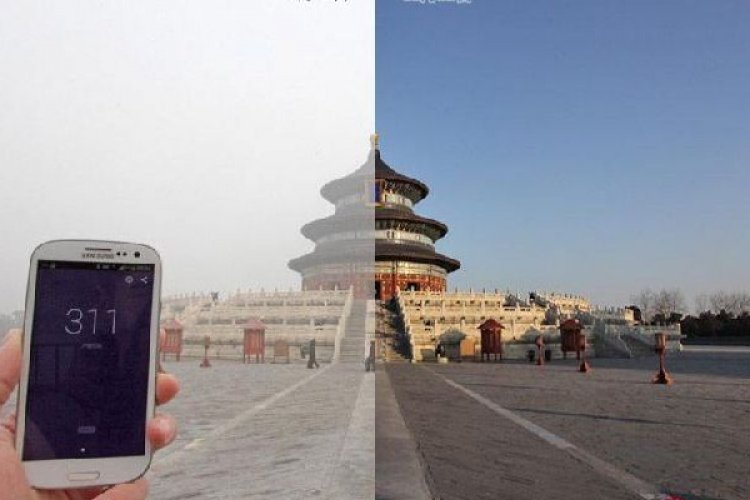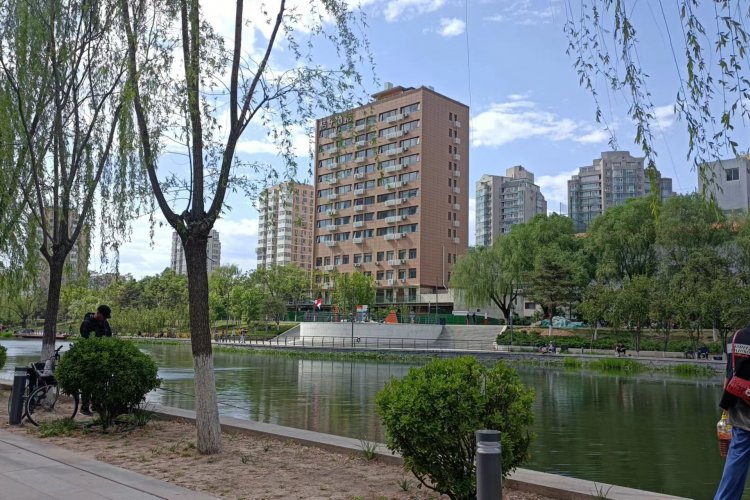New Air Filtration Device a Nice Try, But Needs Work to be a Real Game-Changer
Ever since first advocating the use of 3M masks while exercising in Beijing, I’ve been a bit of a fetishist for the perfect personal anti-pollution device.
Over the course of my time here, I’ve tried almost every model on the market, and I’ve settled on a couple of models by 3M that fit my face. (That's because of equal importance to the filtering efficiency of the mask material itself is the fit on your face – particularly around the bridge of your nose.)
RELATED: Which Air Quality Monitor Should I Buy?
I’m now completely accustomed to wearing a mask on bad air days, though two irritating problems still exist:
1. I’m never really sure if the seal is perfect. While it feels right, I can’t help thinking that when I take deep breaths, I still could be drawing bad air in through the sides of the mask.
2. The condensation factor. A tight-fitting mask will tend to build up condensation from your breath and sweat over time. I tend to walk a lot in Beijing, and even in the winter, after about 20 minutes of brisk walking, rivulets of moisture form on the inside of the mask, making it a nuisance to wear and more difficult to draw a breath through the filter as it begins to get wet.
So I’m always on the lookout for a better mask, and it was with great relish that I noticed a colleague showing up for work wearing the Mini Lung-Pro, a mask attached to a rechargeable battery-driven HEPA filter and fan, which draws in air and sends it directly into a mask via a length of plastic tubing.
The device shows promise for these three reasons:
1. The promise of not having to obsess over mask fit. With positive air pressure delivered inside the mask, your breathing is less likely to suck in polluted air via the edges of the mask.
2. The promise of better ventilation inside the mask. With a flow of air from the outside, perhaps there would be fewer condensation issues inside the mask.
3. And finally, I'm just a mask nerd and this is yet another step in the evolution of personal protection that I just love to see.
So I ordered one up and tested it for a day last week when the AQI in Beijing was in the upper 400s.
In a previous post I already established that the device actually filters out PM2.5 particles via its HEPA filter:
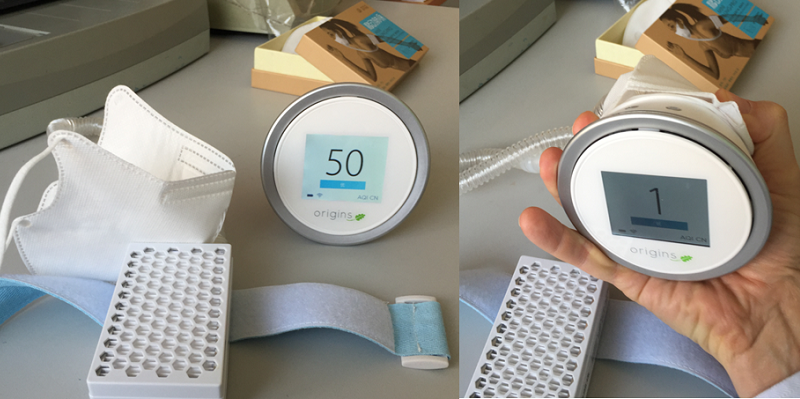
I used two consumer-grade devices to test – the Origins Laser Egg (pictured above) and the Dylos DC1100 – and both showed significant reductions in particulates.
And as a qualification: no, I did not use top-of-the-line professional grade testing equipment, nor did I do this under laboratory conditions. But based on my simple observations and my faith that the consumer-grade air monitors are not completely inaccurate, I am confident in saying the Mini Lung-Pro does filter PM2.5 particulates.
So here’s my observations over a week’s worth of usage:
Advantages
1. The HEPA works: Worried about PM2.5? The miniature HEPA filter on the Lung-Pro works. Extra bonus: replacement filters are only RMB 19.

2. Adaptable to your favorite mask. Everyone has their favorite mask, and the two masks that are supplied with the Mini Lung-Pro are flimsy (and don’t fit me well). However, it's quite easy to fix your own preferred mask to the supplied tube. This is good because the Number One determiner of effectiveness of a mask is the fit around your face. I affixed my favorite 3M 8511 mask to the device in about five minutes; it was fairly simple to cut a hole in the mask (though you need to be extra careful that you do this right – if you cut the hole too big, air will leak in via the edges of the hole you've just punched).
3. More ventilation inside the mask. The cool air flow was a surprisingly pleasant benefit. Usually my mask is filled with condensation, but the onset of this was delayed significantly via the cool winter air that was drawn into the mask. This resulted as well in a much less claustrophobic feeling while wearing my mask.
4. Battery life good for a full day’s commute: I used the device for 3.5 hours without a recharge: 90 minutes on full blast and an additional 120 minutes alternating between the low and medium settings. It passed with flying colors, with battery life leftover at the end. Later, after recharging overnight, I left the device unplugged on its highest setting; the battery lasted for three hours before the device conked out.
Disadvantages
1. Volatile organic compounds?: After flowing through the HEPA, the air passes a board of tiny electronic components and through a length of cheap plastic tubing. The device itself is plastic as well. I tried to “off-gas” the device before using it by turning it on and letting air flow for two hours before wearing it for the first time. No such luck – the device still had a slight but noticeably unpleasant smell when wearing it.
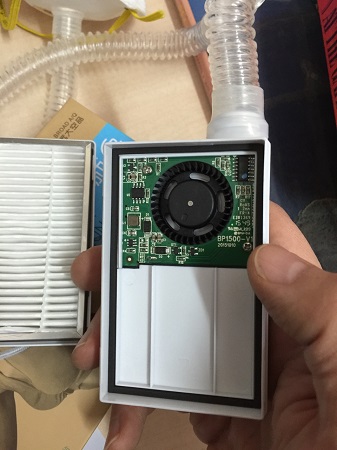
The problem here is that air is then being delivered directly into your breathing passages. Unfortunately there are no reliable consumer-grade testing devices for VOCs that I could find, so I was unable to test my theory, but the smell alone is enough to get me worried.
Later I plugged the device in and let it run at full blast for 24 hours in an effort to rid the device of the odor, but even after that, there was a distinct plasticky smell emitting from the device.
2. Flimsy tubing: The tubing it is exceptionally cheap and flimsy and it's not hard to imagine that a crack could appear along its length without the user noticing. The tube features two robust joiners at each end that fit tightly into the device and the mask, but the plastic tubing inbetween immediately pulled out when I stretched it for the first time when simulating an exaggerated arm movement.
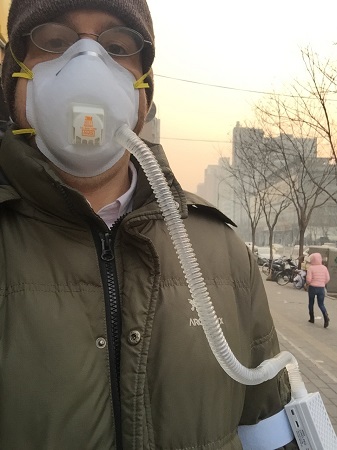
3. Velcro fastener concerns: The device is affixed to the user’s arm using a Velcro strap. This was difficult to put on, particularly over a winter coat. It’s also not easy to do without an extra hand. And while the device attaches firmly to the Velcro patch, one good knock could dislodge the device and cause it to go crashing to the floor. I was not ready to make the sacrifice of doing a test drop, but I could only imagine that it would not likely survive a fall to the ground. Let me tell you as a regular subway and pedestrian commuter in Beijing, people regularly knock into each other and vice versa, so its not hard to imagine the device from becoming dislodged from its Velcro mount.
4. Clumsy to take on and take off: Another serious disadvantage over a normal mask is the general clumsiness of putting on and taking off the device. Whereas my regular disposable 3M can be stuffed into a pocket and taken on and off at will, the Mini Lung-pro takes more time and effort. And its disassembled pieces do not fit easily in a pocket, so storing it it while you are at dinner or something becomes a chore.
Verdict
As much as I really wanted to love this device, the VOCs have me genuinely concerned and the odor and relative inconvenience has me leaning towards my simple 3M mask.
However, this is a great first try and we hope the company behind it (and a million copycats) take it to the next level.
Here's to hoping the next generation of devices makes the following improvements:
- A carbon filter somewhere along the tubing to reduce the likelihood of inhaling VOCs;
- More robust tubing, perhaps medical grade;
- A better fastener system other than Velcro.
With those fixes, the device should be an excellent choice for combatting PM2.5.
Images: Michael Wester

